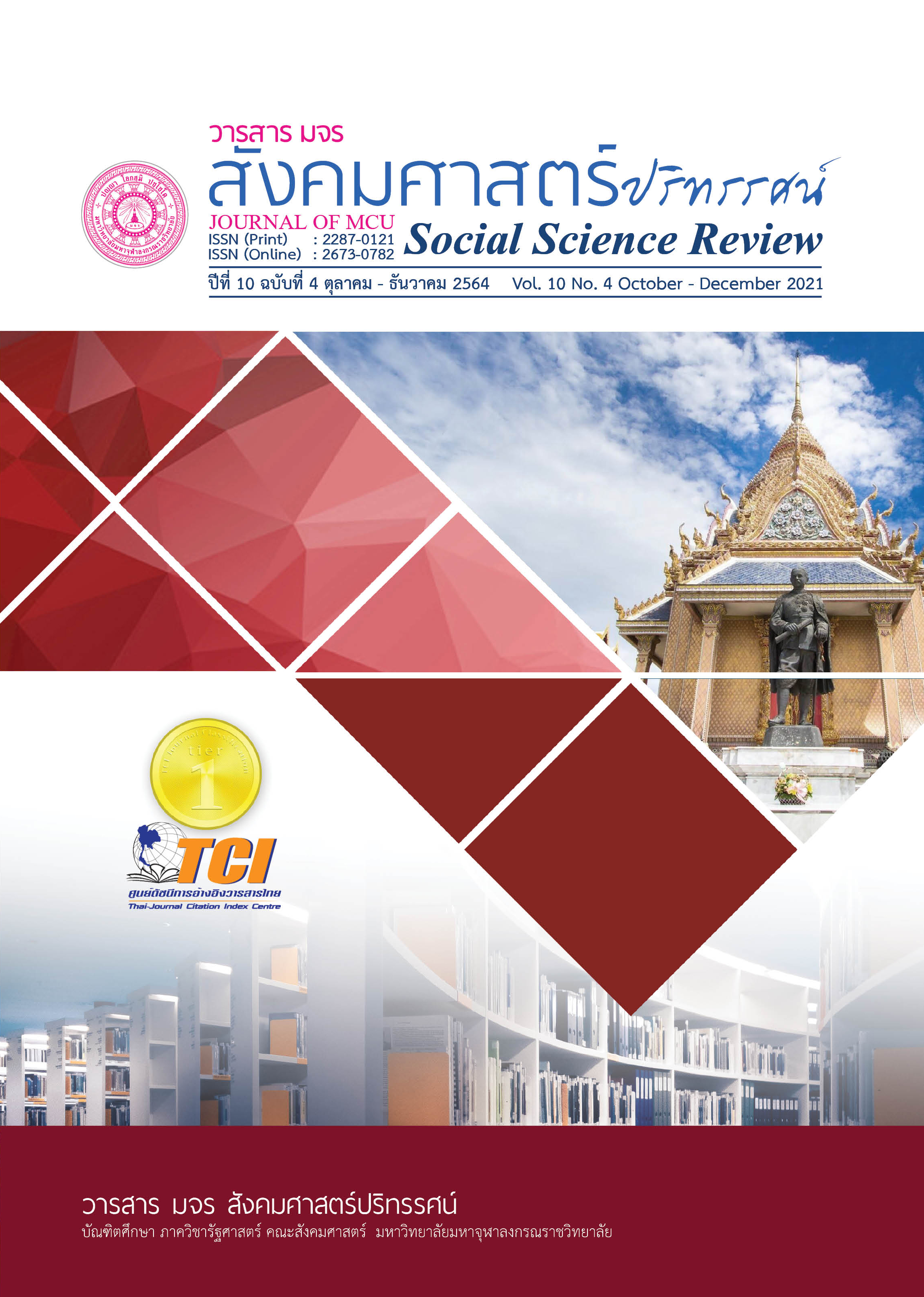แนวคิดและกระบวนทัศน์ของการบริหารการเปลี่ยนแปลงในยุคหลังนวสมัย
คำสำคัญ:
กระบวนทัศน์, การบริหารการเปลี่ยนแปลง, กลยุทธ์การเปลี่ยนแปลง, แรงต้านการเปลี่ยนแปลง, ยุคหลังนวสมัยบทคัดย่อ
บทความนี้มีวัตถุประสงค์เพื่อศึกษาทบทวนพื้นฐานความรู้เกี่ยวกับแนวคิด ทฤษฎี รูปแบบ และกลไกของการบริหารการเปลี่ยนแปลง ด้วยการทบทวนวรรณกรรมต่างๆ ที่เกี่ยวข้องทำให้ทราบถึงกรอบแนวคิดและกระบวนทัศน์ในการบริหารการเปลี่ยนแปลงองค์การในยุคหลังนวสมัย ซึ่งองค์การในยุคปัจจุบันได้นำแนวคิดด้านรูปแบบของการบริหารการเปลี่ยนแปลงเชิงกลยุทธ์ เข้ามาใช้เพื่อเพิ่มความสามารถในการแข่งขันและความอยู่รอด จากการสังเคราะห์แนวคิดและทฤษฎีการบริหารการเปลี่ยนแปลงพบว่าแนวทางการพัฒนาการบริหารการเปลี่ยนแปลงในยุคหลังนวสมัยประกอบด้วย ความสามารถในการรับรู้การเปลี่ยนแปลงของผู้บริหาร การสร้างการรับรู้ การสร้างแรงขับด้านความต้องการจากภายใน การให้ความรู้ การสร้างความสามารถ และการดำรงรักษาการเปลี่ยนแปลงให้คงอยู่ บทความนี้จะอธิบายถึงหลักการและรูปแบบของการบริหารการเปลี่ยนแปลงในยุคปัจจุบันให้องค์การประสบความสำเร็จ
เอกสารอ้างอิง
จรัสพิมพ์ วังเย็น. (2554) แนวคิดโลกหลังสมัยใหม่: การย้อนสู่โลกแห่งภูมิปัญญา. วารสารสถาบันวัฒนธรรมและศิลปะ, 13(1), 1-10.
นิเทศ ตินณะกุล. (2546). การเปลี่ยนแปลงทางสังคมและวัฒนธรรม. กรุงเทพฯ : สำนักพิมพ์แห่งจุฬาลงกรณ์มหาวิทยาลัย.
Angela, V. D. H. et al. (2012). Change agent sensemaking for sustainability in a multinational subsidiary. Emerald Group Publishing Limited, 25(1), 535 – 559.
Beer, M. (1980). Organization Change and Development: A Systems View. Santa Monica: Calif. Goodyear Publishing.
Carla, M., et al. (2012). Sustainability and the need for change: organizational change and transformational vision. Journal of Organizational Change Management, 25(4) 489-500.
Cummings, T. G., & Worley, C. G. (2014). Organization development and change. Cengage learning.
Daniel, A. W. (2005). The History of Management Thought. Fifth Edition. John Wiley & Sons, Inc.
Ellegård, A. (1990). Darwin and the general reader: the reception of Darwin's theory of evolution in the British periodical press, 1859-1872. University of Chicago Press.
Hiatt, J. (2006). ADKAR: a model for change in business, government, and our community. Prosci.
Joris, V. D. V. (2014). The effectiveness and specificity of change management in a public organization: Transformational leadership and a bureaucratic organizational structure. Elsevier Ltd, 32(1), 373 – 382.
Kippenberger, T. (2014). A new way to create strategic change?. The Antidote, 5, 11-13.
Kotter, J. P., & Schlesinger, L. A. (1979). Choosing strategies for change. Harv Bus Rev 1979, 57(2), 106-114.
Lewin, K. (1951). Field Theory in Social Science: New York: Harper & Row
Rodrigues, L. L., & Dharmaraj, N. (2006). System dynamics approach for change management in new product development. Management Research News.
Senge, P.M. (1990) The Fifth Discipline: The Art and Practice of the Learning Organization. N.Y.: Doubleday.
Wadood, S., et al.(2016). Influence of Change in Management in Technological Enterprises. Elsevier B.V., 37, 129 – 136.
ดาวน์โหลด
เผยแพร่แล้ว
รูปแบบการอ้างอิง
ฉบับ
ประเภทบทความ
สัญญาอนุญาต
ลิขสิทธิ์ (c) 2021 วารสาร มจร สังคมศาสตร์ปริทรรศน์

อนุญาตภายใต้เงื่อนไข Creative Commons Attribution-NonCommercial-NoDerivatives 4.0 International License.
เพื่อให้เป็นไปตามกฎหมายลิขสิทธิ์ ผู้นิพนธ์ทุกท่านต้องลงลายมือชื่อในแบบฟอร์มใบมอบลิขสิทธิ์บทความให้แก่วารสารฯ พร้อมกับบทความต้นฉบับที่ได้แก้ไขครั้งสุดท้าย นอกจากนี้ ผู้นิพนธ์ทุกท่านต้องยืนยันว่าบทความต้นฉบับที่ส่งมาตีพิมพ์นั้น ได้ส่งมาตีพิมพ์เฉพาะในวารสาร มจร สังคมศาสตร์ปริทรรศน์ เพียงแห่งเดียวเท่านั้น หากมีการใช้ภาพหรือตารางหรือเนื้อหาอื่นๆ ของผู้นิพนธ์อื่นที่ปรากฏในสิ่งตีพิมพ์อื่นมาแล้ว ผู้นิพนธ์ต้องขออนุญาตเจ้าของลิขสิทธิ์ก่อน พร้อมทั้งแสดงหนังสือที่ได้รับการยินยอมต่อบรรณาธิการ ก่อนที่บทความจะได้รับการตีพิมพ์ หากไม่เป็นไปตามข้อกำหนดเบื้องต้น ทางวารสารจะถอดบทความของท่านออกโดยไม่มีข้อยกเว้นใดๆ ทั้งสิ้น





